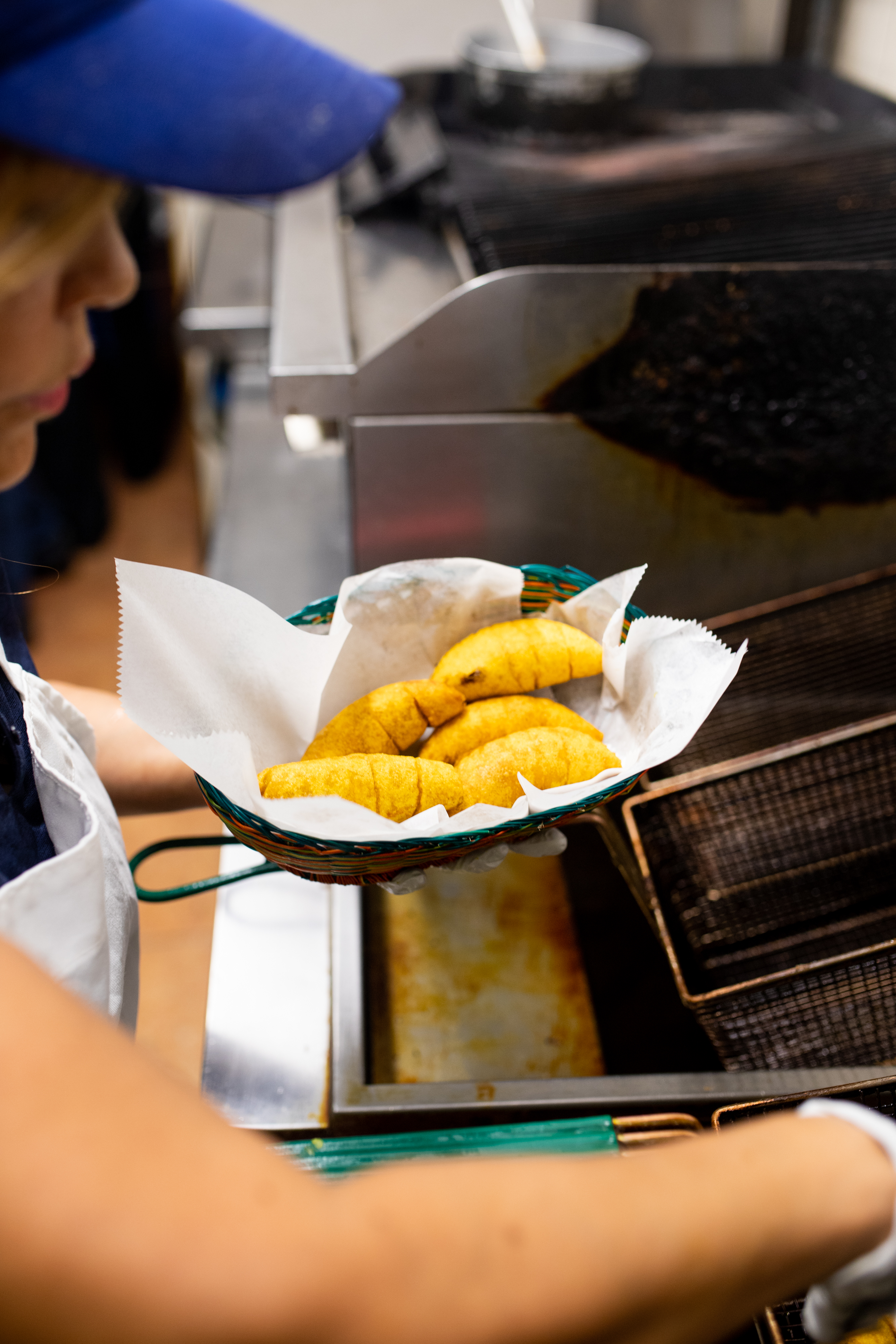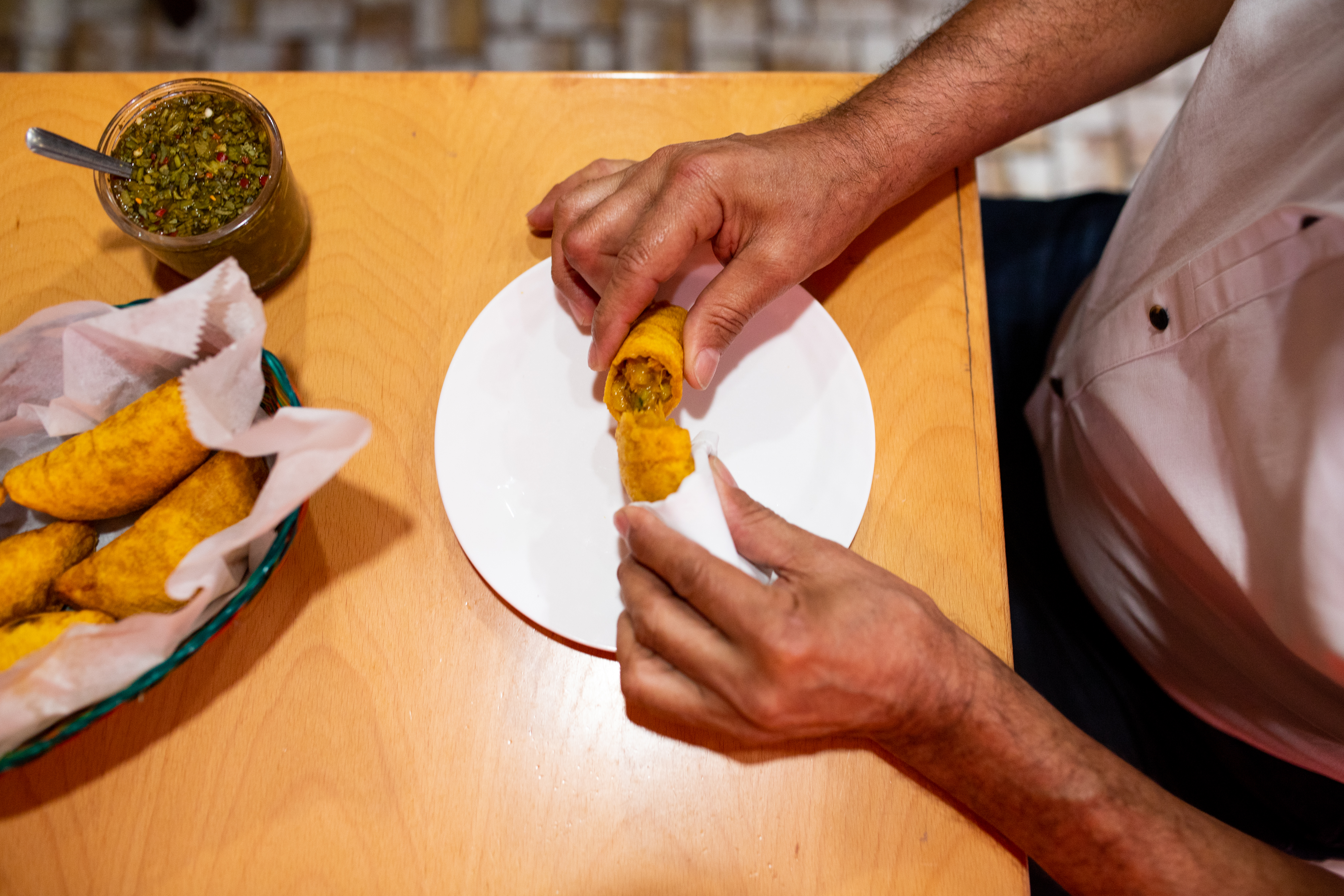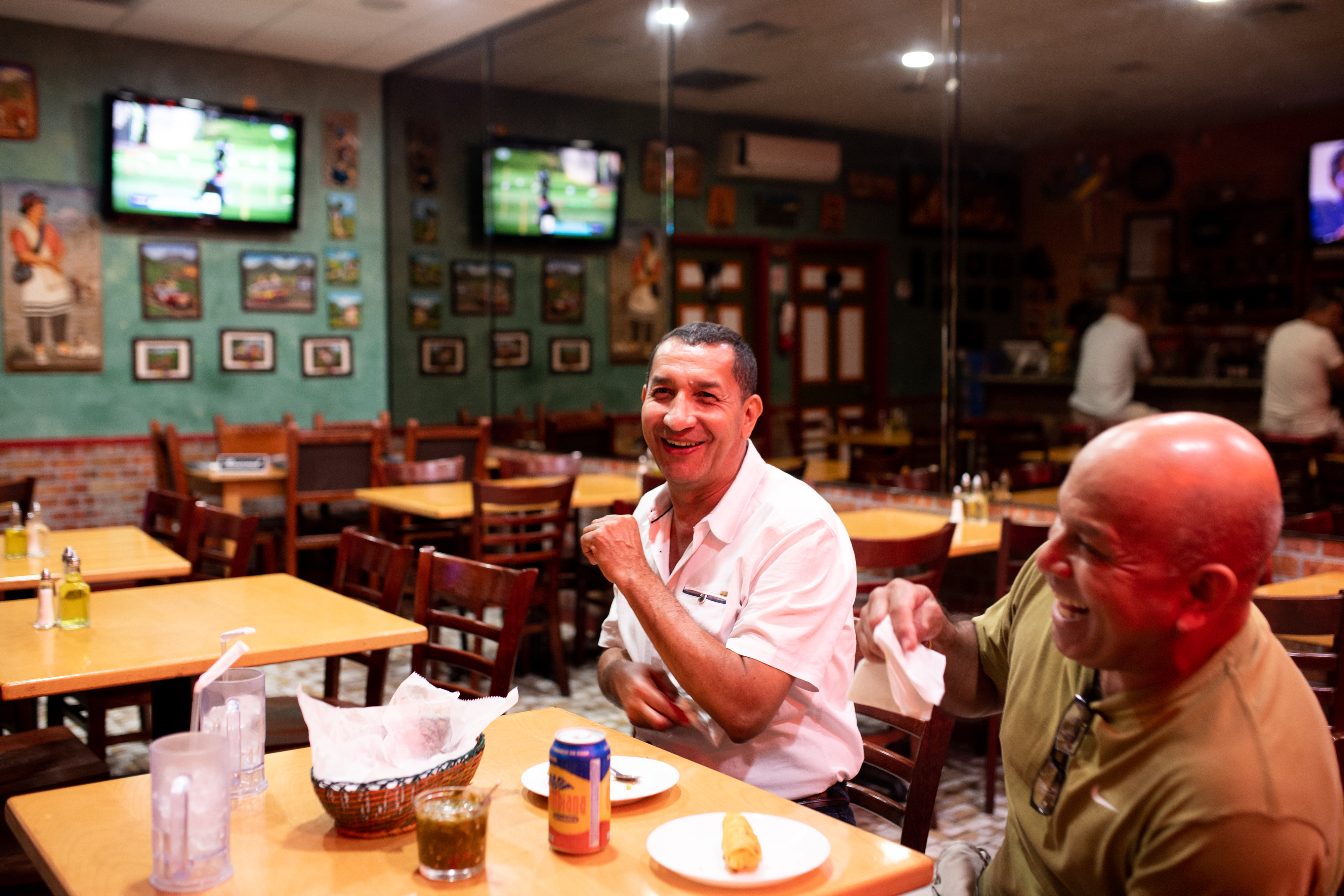
The empanada is more than just a snack for Miamians. Over the years, this relatively simple mini-meal has evolved. It’s become a citywide staple — the preferred food-on-the-go for residents and tourists alike. Locals with roots in Argentina, Peru, Chile, Venezuela, and Colombia all feel a deep cultural connection to these pillowy pockets of dough.
From South Beach to Wynwood and Little Havana to the Design District, empanada aficionados are blessed with plenty of choices. Milly’s Empanada Factory in Kendall preps theirs Venezuelan-style, fried to order. Manolo in Miami Beach does Argentinian empanadas, baked rather than fried. Gauchos Market in West Kendall is also Argentinian in origin, with a different folding pattern for the dough that wraps each of their many-flavored fillings. Confused? Empanada Harry’s Bakery & Café creates empanadas representative of Chile, Argentina, Venezuela, Peru, and Colombia. They also have specialty flavors like “The Cubano” and Guava & Goat Cheese.
As a Colombian-American, born and raised in Miami, I favor our take on the delicacy like those found at Pollo Brasa y Sazon. The restaurant, which has been a part of my life as long as I can remember, made its name by offering Colombians the comforts of home. A big part of that means friendliness and charm — warm greetings, excited conversations, and booming laughter. It also means freshly sourced ingredients that make you feel like you’re sitting in a corner store in Valle del Cauca.
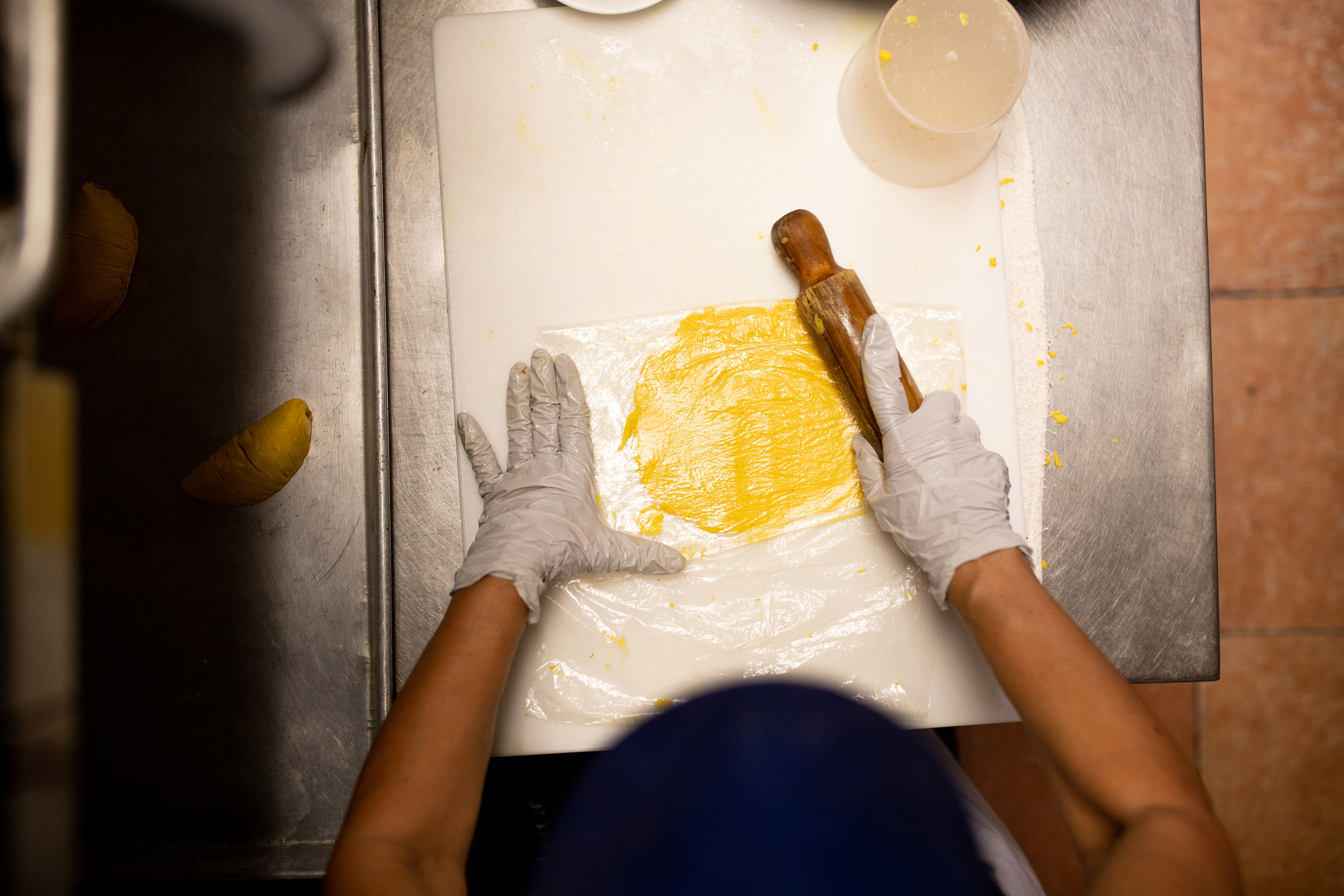
In hopes of understanding the empanada’s place in Miami’s rich culture, I asked Pollo Brasa y Sazon’s owner Rigoberto Restrepo and head chef Maryori Diaz if I could visit their kitchen. It was a chance to witness first-hand how this deeply significant food comes to life. It was also an opportunity to savor empanadas straight out of the fryer.
“You caught me at a good time,” Maryori said with a smile as I entered the restaurant’s kitchen. (We spoke in Spanish, but I’ll translate throughout.) “I’m about to stuff the empanadas with the beef guiso. This filling was made by Rigoberto himself.”
Maryori used a rolling pin to flatten the empanada dough under a sheet of plastic wrap, while adding a little oil.
“Here we make the dough with corn flour and a secret seasoning mix,” Maryori explained. “That’s the authentic way.”
As she worked, Maryori talked me through her process — sharing what it takes to make enough empanadas for Pollo Brasa y Sazon’s eager clientele.
“I can make around 100 empanadas in an hour,” she said, without a hint of arrogance. “But I still take my time with each one.”
As I wrote down the various steps and noted her simple instruments — rolling pin, plastic wrap, a plastic container — Maryori made a point of emphasizing one thing above all else.
“Love is the most important part,” she said. “That’s the ingredient you can’t fake.”
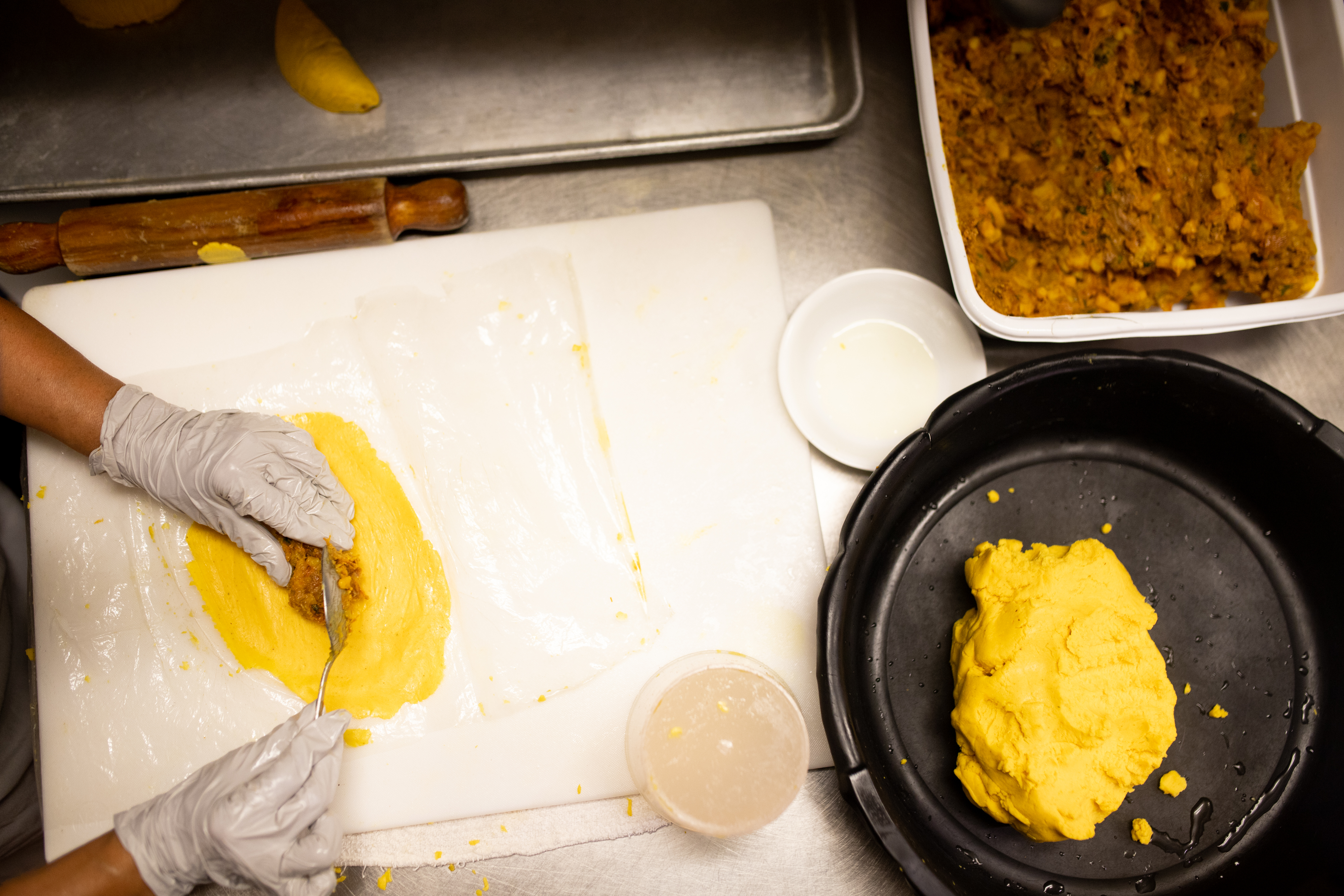
When her dough was flattened, Maryori forked a portion of filling on top, folded the dough over the meat, and used a plastic food container to give the empanada shape.
“The guiso — what comes inside the empanada — is made with finely chopped meat,” Rigoberto said, entering the kitchen, beaming with pride. “To make a true Colombian empanada, ground beef won’t do the trick here. You also need small cut red potatoes, garlic, Colombian-inspired sazón [seasonings], scallions, and a hint of salt.”
The potatoes, beef, and garlic combine to make an umami bomb. When offered a forkful, I couldn’t resist. Even before being fried, it’s rich and savory and reminded me of trips to Colombia as a girl. The spices added punch without being overwhelming.
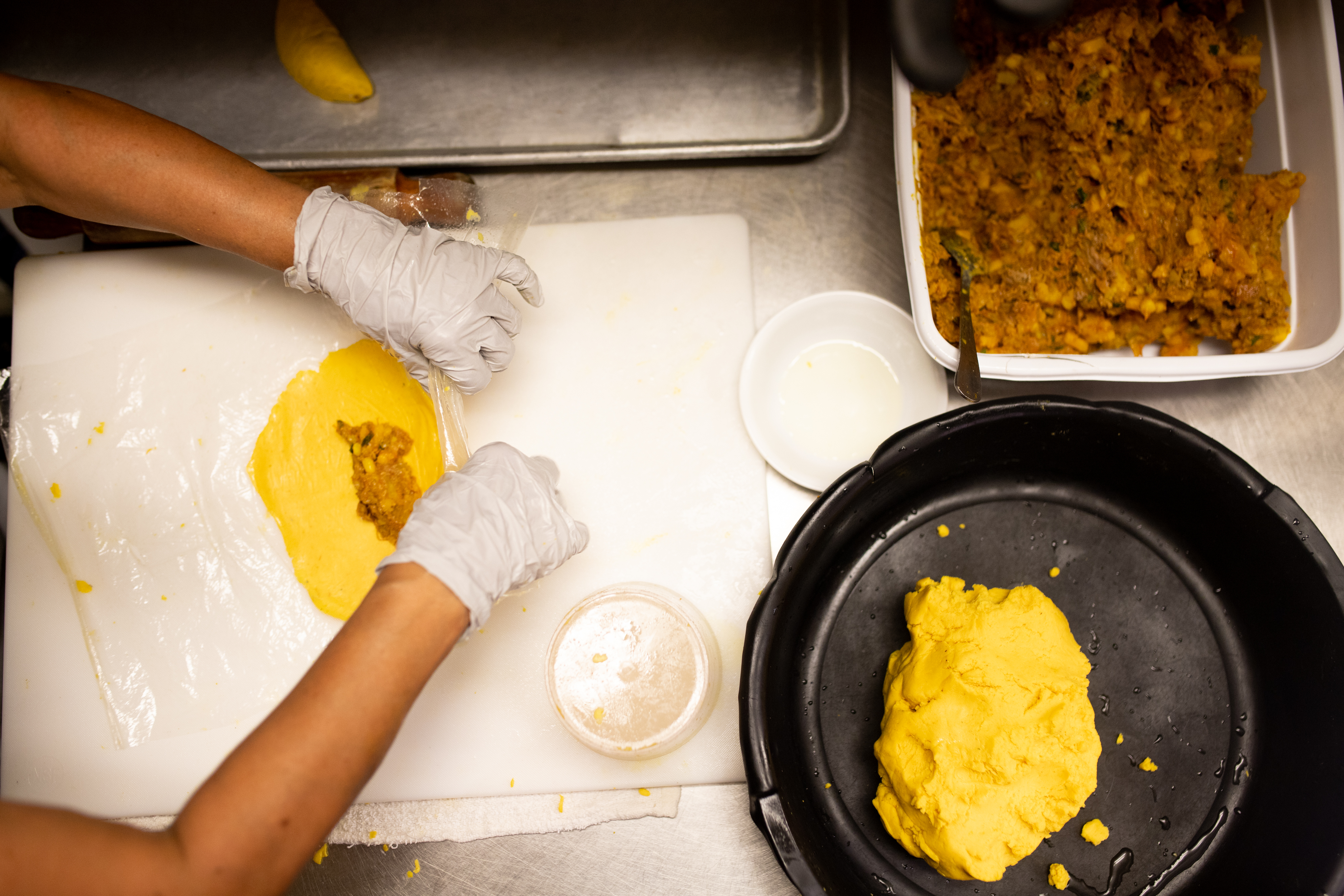
I watched Maryori position the first batch of empanadas in the fryer and lower the fry basket. The sizzle was music to my ears. The moment the oil hits the dough, you can start to smell the flavors and spices opening up. The empanadas are fried until crispy — which takes about 5-10 minutes. Maryori likes to stick a small knife in one to check if it’s done.
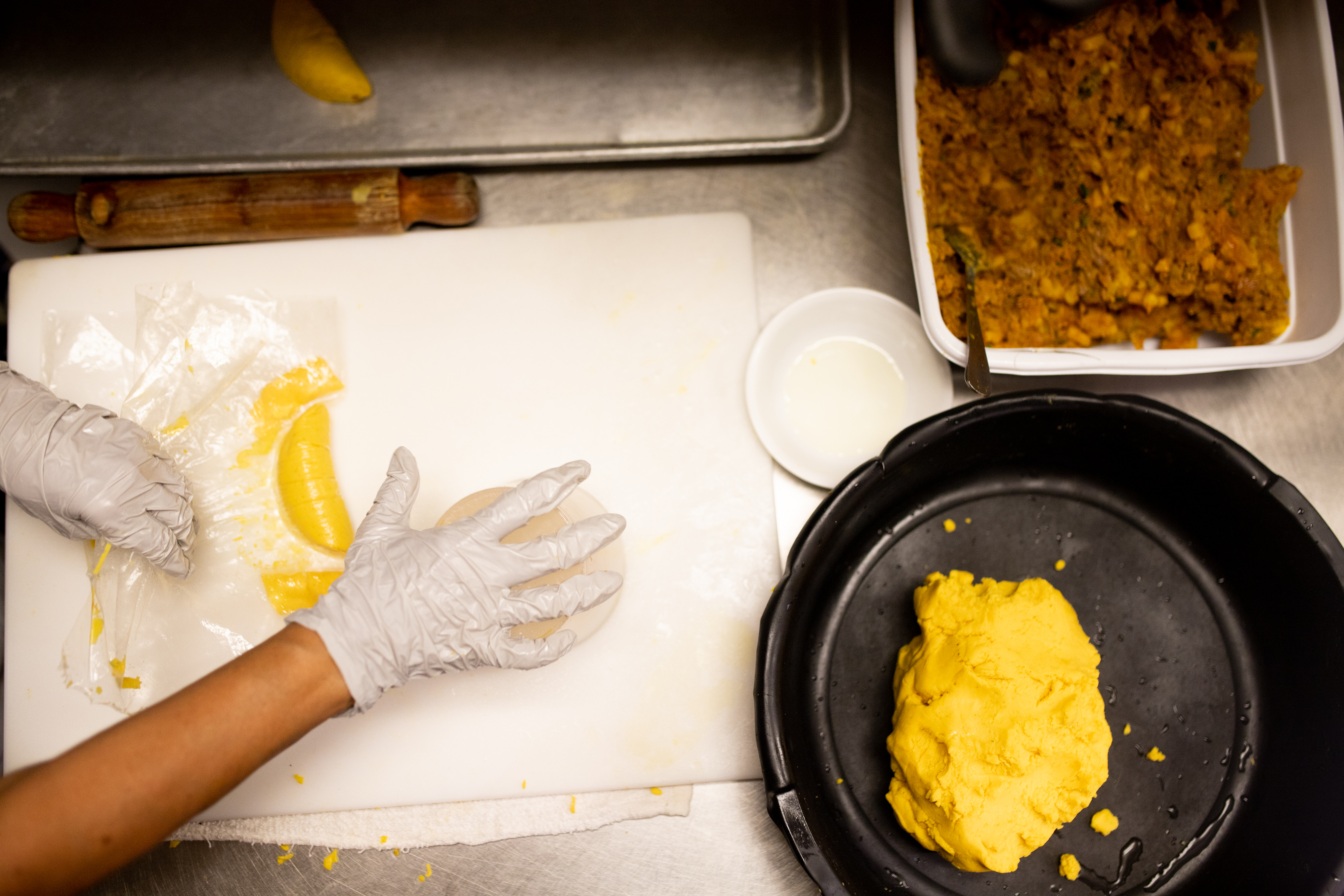
As the first batch of empanadas was taken out of the oil and given a chance to cool off, I sat with Rigoberto and one of the restaurant’s most regular customers — a surprise addition to the evening: my dad, Hector Bastidas. I hadn’t expected to see him at the restaurant that night, but in a tight-knit community like this, you’re never surprised.
“Rigoberto, what do you think makes the perfect empanada?” I asked, taking my first bite.
“You should ask me!” my dad called, from a table nearby. “I’m here twice a week!”
Rigoberto laughed. “To make this dish right, you have to include that authenticity that comes with the culture of the person who makes them. We make our empanadas here in a way that showcases Colombia. Each ingredient is significant because its what keeps the tradition alive.”
The filling was savory and well-spiced — bursting with flavor. The dough was light and flaky. This is the sort of snack that you long to turn into a full blown meal.
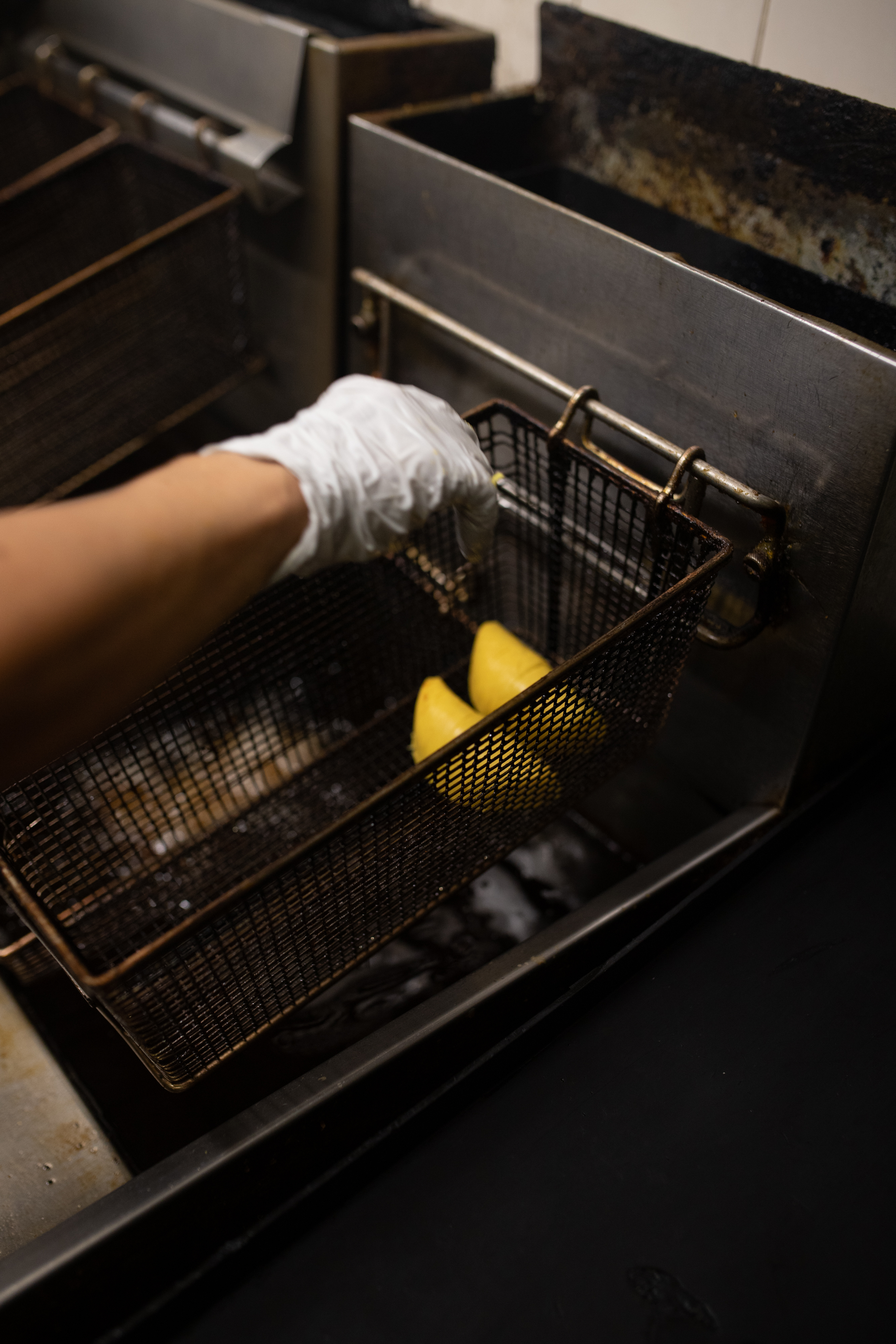
While the dish is clearly resonant for Rigoberto because of its connection to Colombia, he also sees it as an important part of Miami’s rich foodway. Empanadas are popular throughout Greater Miami. You can find them on street corners and fine dining establishments.
“Miami is such a melting pot of cultures and everyone strives to show where they came from,” Rigoberto said. “What better way to celebrate that than through Latin gastronomy? It’s a chance to represent your home and also feel at home here in the city.”
Leaving her hair net and apron in the kitchen, Maryori joined us to taste her creations before heading home for the evening.
“Maryori, these are… well, they’re the best I’ve ever tasted,” I said to her, taking a bite of my second empanada of the night. “The flavors are clear but also… strong.”
Maryori smiled at me, more like a familiar auntie than a proud chef. “Great to hear that sweetie. I consider them to be very artisanal and prepared in true Colombian style.”
These days, empanadas are a Miami phenomenon with grocers like Publix and Walmart selling them in their bakeries. But it’s the small local restaurants that keep the history and authenticity of the dish intact to its core. They insist on creating each empanada by hand — not because it’s the easiest way (it’s certainly not) but because it’s what tradition dictates.
As I prepare to leave, a small bag of empanadas gripped tight, Maryori stops me. “Remember, to tell people that I made each empanada with love. If you’re looking for a secret, that’s it.”
